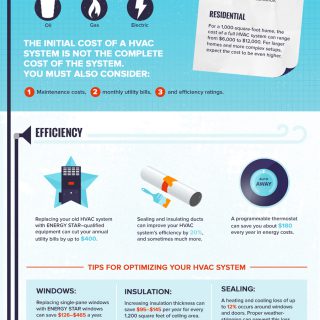Maximizing Convenience And Savings - Tips For Optimizing Your Heatpump Performance
Maximizing Convenience And Savings - Tips For Optimizing Your Heatpump Performance
Blog Article
Content Writer-Fulton Lindhardt
Whether you have a heat pump or have an existing boiler back up, there are a few things that can be done to maximize your system for effective operation. By adhering to these suggestions, you can take full advantage of comfort and financial savings without straining your system or acquiring energy costs.
Readjusting your thermostat for effectiveness is one of the first steps. Using zoning abilities to limit home heating of empty rooms is an additional efficient strategy.
1. Set Your Thermostat to the Right Temperature level
As the periods change, balancing comfort and expense effectiveness can be a difficulty. Fortunately, a couple of straightforward ideas can aid you minimize energy usage and maximize savings.
Begin by figuring out the best temperature level for your family, after that set your thermostat appropriately. Stay clear of making large raise and down in the temperature setting, as this will trigger your heatpump to cycle on and off extra frequently, using up more power.
Instead, progressively lower the temperature at night for an extra comfy sleeping atmosphere. After that, increase it a little in the early morning. Keep in mind to maintain air vents open and directed downward when home heating, and up when cooling down to enhance blood circulation.
2. Examine Your Device Consistently
A heat pump system requires minimal maintenance, but it is very important to evaluate the unit regularly to catch any kind of issues prior to they become extreme. Tidy indoor filters on a timetable set by the maker or when they're noticeably unclean, and make sure outdoor systems contend least two feet of clearance to allow for air flow.
Checking the system will additionally include cleansing, tightening electrical terminals, and running efficiency tests to ensure precision during heating and cooling down modes. It's recommended to have a professional solution the heat pump two times a year. Performing https://www.cdc.gov/coronavirus/2019-ncov/prevent-getting-sick/improving-ventilation-home.html can make the most of energy savings and prolong the life of the device.
3. Clear Snow and Ice Around the Device
Heatpump are designed to run outdoors and need to be free of snow and ice in order to flow air. If your heat pump is blocked by snow and can not pull in air, it will toggle between cooling and heating and may overwork.
It is essential to get rid of a two-foot clearance around your exterior system in order to boost airflow and avoid ice build-up. Heatpump generally go into a defrost mode in the wintertime to melt ice and snow yet this process can be bothersome if your system is blocked by too much snow. This will lower your power performance and cause costly repair work costs in the future.
4. Examine the Refrigerant Levels
A heat pump utilizes refrigerant to cool your home in summer season and cozy it in winter season. You can assist maximize its efficiency by regularly examining the refrigerant levels.
It takes much more energy to change the temperature of your heat pump from a comfy readying to a cooler one than it does to preserve that temperature level. Altering the temperature level for short periods of time can also squander energy.
Leaking air ducts and dirty air filters can bring about uneven temperature levels. They can likewise make your heat pump less effective and set you back even more to operate. A professional can situate and repair these problems to enhance your heat pump's efficiency.
5. Optimize Your Zoning Capabilities
Using the zoning capabilities of a heat pump can assist to reduce energy waste by heating up only busy rooms. This not only lowers energy intake but also decreases operating costs and extends the life of the system.
The Build Balanced Areas device makes use of a genetic formula to construct zones that meet needed zone building standards. These requirements include equivalent area, density, and equivalent number of functions.
Furthermore, by using wise thermostat innovation to enhance the temperature setups based on tenancy patterns and scheduling, you can further boost your heat pump's performance. Preserving a clean air filter, making sure correct insulation and having your ductwork assessed for efficiency can all contribute to improved energy financial savings too.
6. Shielding the Outdoor Unit
House owners often ask whether it's worthwhile to plant shade trees near their outside ac unit (AIR CONDITIONER) system. The solution is normally of course, as shielding the air conditioner device can help in reducing warm from the sunlight, which consequently assists it cool much more effectively.
Nonetheless, it's important to keep in mind that shading the a/c system doesn't always reduce energy consumption. As explained in the Conversation section of the FSEC record, the temperature of the surrounding air has a bigger effect on cooling down performance than does the volume of air pulled in by the air conditioner.
If your a/c compressor is on the south side of your home, think about planting tall, deciduous trees with vast, spread-out covers. These can provide adequate color within one year.